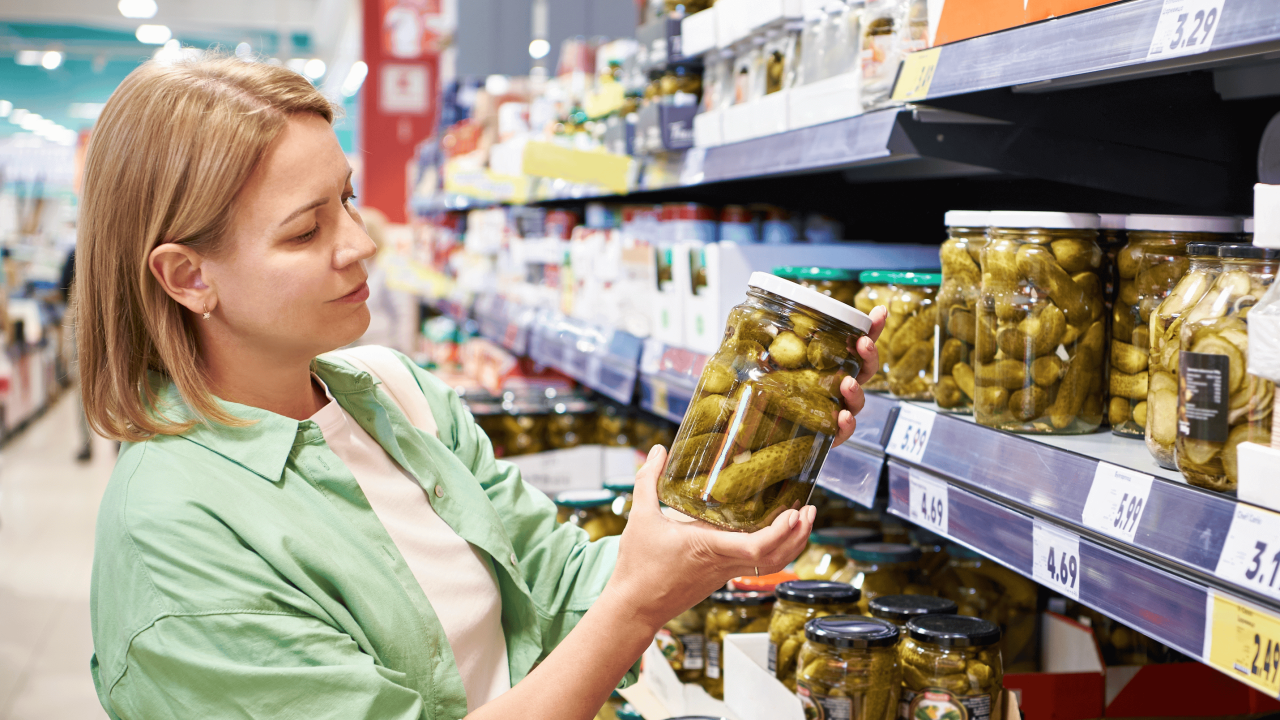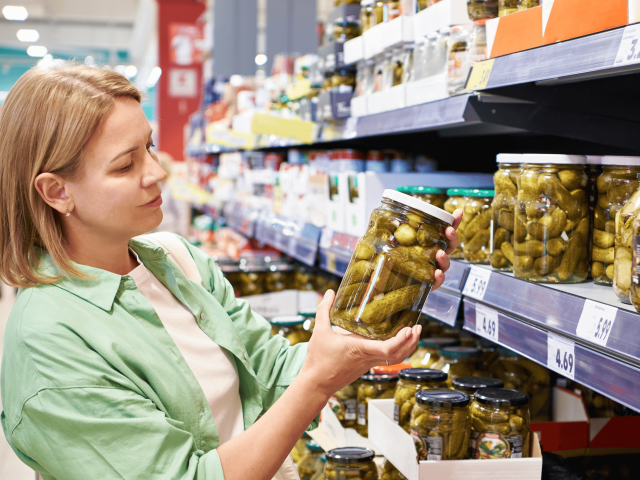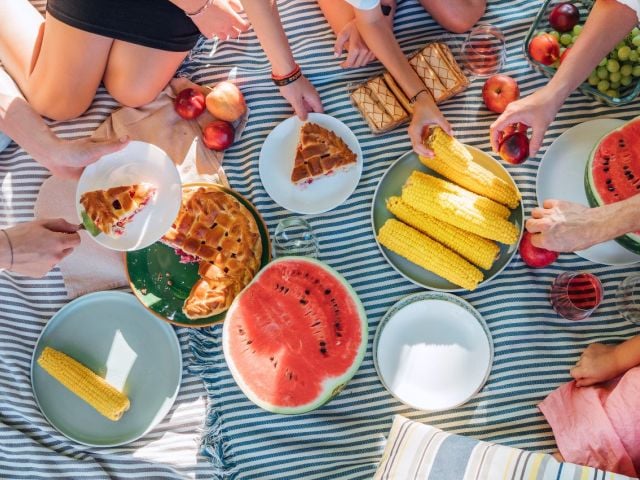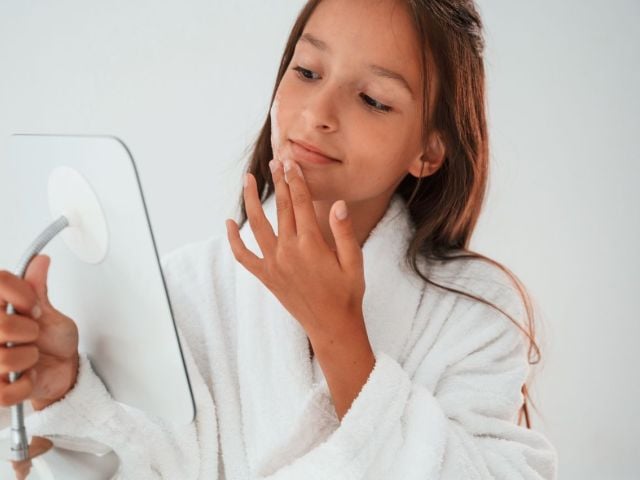
You’re aware that some sweets, breakfast cereal and soda contain artificial color, so if you don’t eat them, you can mostly avoid artificial food dye – right?
Not so fast. Turns out there are plenty of foods you’d never suspect contain artificial food dyes but actually do – including some seemingly healthy foods.
The presence of these colors is a problem, because research has long shown they are harmful, particularly for children.
Three colors in particular – Red Dye No. 40, Yellow Dye No. 5 and Yellow Dye No. 6 – make up 90 percent of food dye used in the U.S. More than 36,000 food products sold in the U.S. contain Red 40, according to the Department of Agriculture’s branded foods database. It’s by far the most used dye, measured by pounds consumed. And EWG’s Food Scores database, which rates products on their nutrition, ingredient and processing concerns, contains about 13,000 products made with dye.
And the numbers are going up. Between 2001 and 2019, the proportion of food products containing additives purchased by U.S. households went up from about half to about 60 percent, according to a 2023 study. An older study found that the amount of artificial food dye the Food and Drug Administration inspects – used as a proxy for consumption – soared more than fivefold between 1950 and 2012.
Companies aren’t required to reveal how much food dye is in their products – it’s a trade secret. So it’s hard for consumers to identify exact quantities.
Appearances can be misleading
For instance, a brand’s fruit snacks could contain Blue Dye No. 1 but have individual pieces that are red, yellow or other colors. There are exceptions, of course. Blue and red combine to make a variety of purples – used, for instance, in lavender syrup.
Fun colors – less fun impact
The California Legislature is debating a bill that would protect children from six artificial dyes by banning them in food provided in public schools during regular school hours: Red 40, Yellow 5 and 6, Blue 1 and 2 and Green Dye No. 3.
There’s a good reason for this move – kids are more vulnerable than adults to the health harms of these chemicals. A California agency found in 2021 that artificial food dyes are linked to behavioral difficulties in children and harm to memory and learning.
The bill follows a landmark 2023 law, the California Food Safety Act, banning Red 3from food products manufactured, sold or distributed in the state. Because of the size of the California economy, and companies’ reluctance to formulate one product for the Golden State and another for the rest of the country, it’s likely they will simply stop using Red 3 in all products sold in the U.S. It's a major win for consumers.
These more stringent laws are long overdue. Products made with dye in the U.S. are often sold in other countries without them. In the European Union, food with any of six artificial dyes must contain a warning label. Some countries have banned Yellow 5 outright.
Red Dye No. 3 has been banned in Europe from food since 1994. Here it was banned in personal care products in 1990 but is still allowed in food.
Find out which foods have artificial dyes
Many food products that seem relatively healthy and not overly processed may turn out to contain artificial dye, often more than one.
Prepared food, meal starters and other products
Who would think a smoked salmon product contains food coloring? But foods such as a salmon salad and Southwestern salad with salmon often do. Your salmon cream cheese may too.
And check local and regional brands to see what’s in their prepared and packaged foods. Ingredients will be listed so you can find out what you’re eating.
Some meal starters contain more than one or two colors, such as Signature Select Skillet Dinners Pasta and Sauce Mix, which contains three. A cheesy tuna pasta casserole mix contains yellow dyes.
Restaurants serving similar dishes aren’t required to disclose what’s in their food.
Mainstay snack foods for kids
Parents love to ply their kids with “healthy” snack options, and yogurt seems to fit the bill.
Artificial color is often an ingredient in these snacks, though, especially in berry-flavored yogurts. But it may lurk in more unusual flavors, too, such as guava and key lime pie. Flavored low-fat yogurts can also contain as much sugar as the same volume of ice cream, sometimes more.
Other snack standbys are chips and fruit cups. But individual containers of Mott’s Applesauce Strawberry Cups are often made with artificial coloring. So are packaged items made with cherries, such as pies and cheesecake. And make sure to check ingredient labels for chips with “flaming” or “BBQ” or “hot” flavor, since these typically use dye.
No matter the snack food, make sure to check the label for food dye. For instance, this salami and cheese cup contains Red 40.
Wasabi peas
Here’s another surprise: Wasabi-covered peas get their green from artificial dye. It’s likely not from Green 3, which isn’t widely used but is in the bill California lawmakers are considering. Instead you can thank Blue 1 and Yellow 5 in combination – maybe with some Red 40 thrown in – for the leafy color, whether the peas are in a mix of snack items or on their own.
Dried fruit and trail mix
Some kinds of dried fruit, such as papaya, get their bright color from artificial dye. Trail mix products, such as Wegman’s brand, contain many different fruits, seeds and nuts, which means it could contain several colors.
Condiments
Many of the flavorings people add to their food – even a seasoning such as lemon pepper – contain artificial dye.
These colors can be found in relish and pickles such as Vlasic Sweet Relish, Heinz Sweet Relish and Stater Bros. Whole Dill Pickles, hot sauce, and even some types of mayonnaise.
The deep red in a mixture like Black Bear Cranberry Horseradish Sauce doesn’t come naturally, and pickled ginger may well contain Red Dye No. 40.
Salad dressing
Whether the dressing on your salad is French, ranch or Italian, it may well be colored artificially. Kraft Creamy French Salad Dressing contains both yellow dyes. Hidden Valley Light Golden Italian Dressing and Hidden Valley Avocado Ranch Salad Dressing contain Yellow 1 and 2, as well as Blue 1.
French dressing’s first cousin, Catalina dressing, is made with Red 40, Yellow 6 and Blue 1.
Sauces
No matter their flavor, sauces are often artificially colored.
Marinades, barbecue sauce and classic cocktail sauce may contain color, and so too can a Mexican-derived sauce like La Victoria Creamy Green Chile Sauce.
Cheesy snacks and meal starters
Cheesy snacks like popcorn and puffs are likely sources of Yellow 5.
Spray cheese may contain Yellow 5 and 6. The cheese dip in a nachos and cheese tray and the cheese in a hamburger flavor packet sometimes do, too. Artificial coloring plays a role in dried packet meal starters such as potatoes au gratin and cheesy pasta bowls.
What you can do
The federal government has failed to adequately regulate harmful dyes in food. The FDA hasn't fully reviewed the safety of artificial dye in food since the 1970s and 1980s. So the agency’s approval still relies on older studies, which couldn't detect the neurobehavioral harms we now know about.
In the absence of federal action, states are following the example of last year’s California Food Safety Act. So far, 11 states have introduced bills this year targeting at least one artificial food dye.
For the moment, though, you’re left to shop your way out of the problem.
So what can you do? Start by reading ingredients labels. Packaged foods often contain artificial colors, and the more highly processed the food product, the more likely it is to contain these dyes. So look for those with as few ingredients as possible.
It’s not so hard to make healthy dye-free swaps for many foods, even when taking into account the finicky preferences of toddlers and kids. Keep the focus on unprocessed, whole foods such as fruits and vegetables, nuts and the like.
Ways to reduce dye exposure
Ideas to help you start lowering your family’s exposure to artificial food dye:
Study ingredients lists. These lists can be long. Food dyes often but not always come at the end. You may need to weed through a long catalog of mysterious substances before you spot them. Hint: The shorter the list, the more healthy the food is likely to be.
Don’t get duped. Beware marketing claims such as “all natural” and “healthy.” Foods we think of as more nutritious may contain larger amounts of chemicals and sweeteners than products we think of as occasional treats and desserts.
Keep track of foods and brands that do and don’t contain food dye. This should make it easier for you when you shop for groceries. Trader Joe’s, Aldi and Whole Foods are a few stores that claim toxic food dyes are among a handful of ingredients that aren’t in their foods. (Caveat: Periodically double-check the foods on your list, because formulations change.)
Prefer whole foods, including fresh fruits and vegetables. Only on rare occasions will they contain food coloring.
Buy organic, whenever possible. One characteristic of organic foods is that they must be free from artificial colors. Instead, organic foods get their color with natural food dye. Consult EWG’s Shopper’s Guide to Pesticides in Produce™ to identify the foods that are most and least likely to contain toxic pesticides.
Drink more water and less soda and other chemical-infused drinks. Soda and other drinks are the main source of artificial coloring exposure across all age groups.



